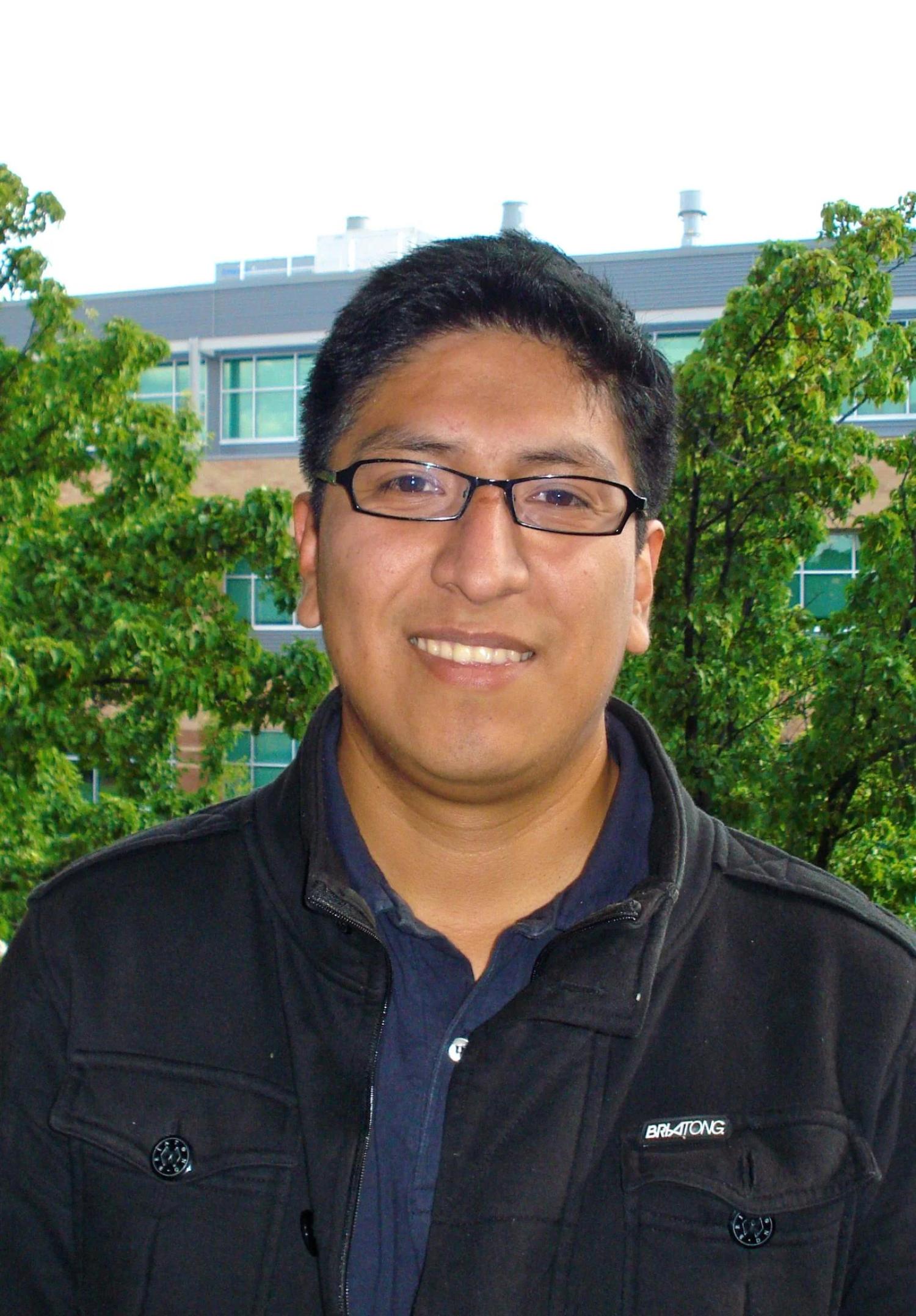CU Boulder scientist advancing space weather research with major NASA grant

Above: Luis Navarro
Header Photo: Rendering of NASA's ICON Satellite, a source of data for Navarro's research.
Luis Navarro is pushing the forefront of research in Earth’s extreme upper atmosphere to answer important and complex scientific questions.
Navarro, a research scientist in the Space Weather Technology, Research and Education Center (SWx TREC) at the University of Colorado Boulder, has earned a four-year, $700,000 NASA Heliophysics grant to investigate how space weather – coronal mass ejections and other activity from the sun – changes the ionosphere and thermosphere at low latitudes near the equator.
“It’s important to understand how these solar disturbances happen,” Navarro said. “It affects satellites and can change how long they stay in orbit.”
Navarro aims to address unanswered questions about plasma coupling with neutral winds in the ionosphere, which stretches from 48-965 km (30-600 mi) above Earth’s surface. Thousands of satellites and the International Space Station orbit within this area.
“We want to help this community of science,” he said.
Navarro will be developing empirical models of zonal plasma drifts combining data from different radars and satellite missions. The work requires analysis using supercomputers to review conditions during both geomagnetic storms and calm baseline periods over long durations of time.
“Observations are always a mix of different things happening at the same time, and we need to isolate out what’s going on. It changes based on time of day, day of the year, solar flux levels, and then some storm effects are very short, maybe 15-mins to an hour. Others can last for hours up to a couple of days. The physics are different for both,” he said.
For Navarro, the grant represents an endorsement of his interest and pursuit of a career in research.
“It’s amazing to get this, to be honest. Coming from Peru, I never imagined it would happen to me,” he said.
Growing up, Navarro was interested in science and math, but Peru offered limited opportunities in those fields. His parents were an inspiration and helped Navarro to attend the Universidad Nacional Mayor de San Marcos, one of the best universities in Peru, where he majored in electronic engineering.
He wanted to pursue a career in research, but it seemed unlikely, until an unexpected job opportunity at the Jicamarca Radio Observatory in Lima changed the direction of his life.
“I thought they were a telecommunications company, but actually they’re an observatory doing space weather research. After applying, I didn’t hear from them for four months. They brought me in and offered me a job and even though it wasn’t what I thought, it was an opportunity, and I had to take it,” he said.
Navarro spent five years there, working on signal processing of remote sensing data from the thermosphere. It furthered his interest in research, and in 2015 he came to the United States to earn a PhD in physics at Utah State University.
He joined CU Boulder in 2022.
“I’m very lucky,” Navarro said. “I really enjoy doing this empirical work over theoretical work. It’s much harder and much more rewarding. I’m very fortunate and very blessed.”
In addition to Navarro, the research will also include CU Boulder research professor and SWx TREC Director Jeff Thayer as well as Bela Fejer, a professor at Utah State University. The full title of the NASA grant is Storm-Time Coupling of Low-Latitude F-Region Ionospheric Plasma Drifts and Thermospheric Neutral Winds and Their Impact on Plasma Density Distribution.

